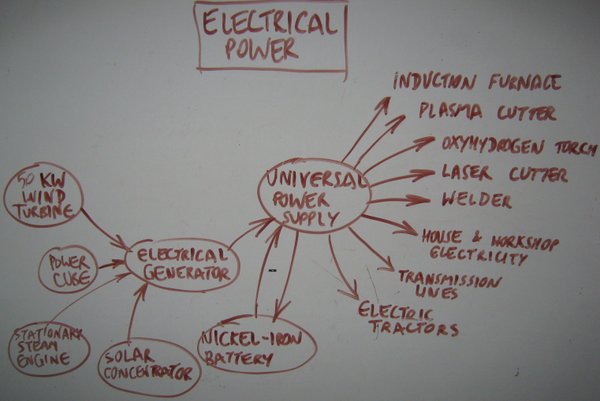Nickel-Iron Battery: Difference between revisions
| Line 5: | Line 5: | ||
==Overview== | ==Overview== | ||
The '''Nickel Iron Battery''' is the primary electrical energy storage device for the [[GVCS]]. | |||
==Detailed Description== | ==Detailed Description== | ||
Revision as of 16:56, 7 September 2011
| Nickel-Iron Battery | ||
|---|---|---|
| Home | Research & Development | Bill of Materials | Manufacturing Instructions | User's Manual | User Reviews | 
| |
Overview
The Nickel Iron Battery is the primary electrical energy storage device for the GVCS.
Detailed Description
The nickel-iron battery (NiFe battery) is a storage battery having a nickel(III) oxide-hydroxide cathode and an iron anode, with an electrolyte of potassium hydroxide. The active materials are held in nickel-plated steel tubes or perforated pockets. It is a very robust battery which is tolerant of abuse, (overcharge, overdischarge, and short-circuiting) and can have very long life even if so treated.[6] It is often used in backup situations where it can be continuously charged and can last for more than 20 years. Due to low specific energy, poor charge retention, and its high cost of manufacture, other types of rechargeable batteries have displaced the nickel-iron battery in most applications. They are currently gaining popularity for off-the-grid applications where daily charging makes them an appropriate technology.
Product Ecology
Made with
- 3D Printer - Casing
- Controller Box - Power
Uses
- Universal Power Supply - Stores energy
See Product Ecologies for more information.
Components
- Insulator Casing
- Nickle
- Iron
- Plates
- Leads
- Wires
Status
The Nickel-Iron Battery is currently in the research phase.
See Also
Wikipedia: Nickel Iron Battery

